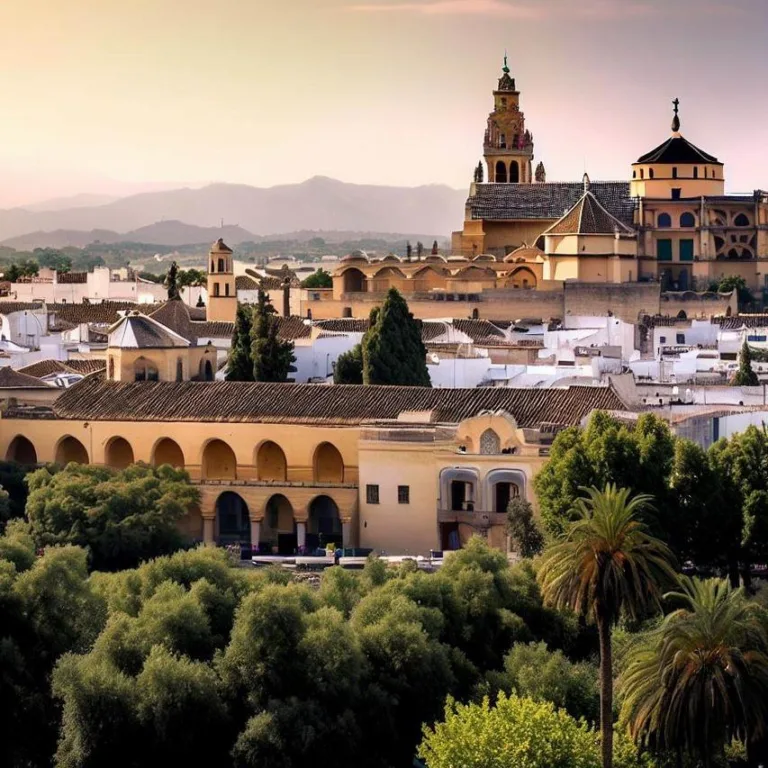Welcome to a captivating journey through the rich tapestry of Cordoba’s history, culture, and architecture. Nestled in the heart of Spain, Cordoba is a city steeped in heritage, with a legacy that spans centuries. From its awe-inspiring landmarks to its vibrant local life, Cordoba is a treasure trove waiting to be discovered.
The historical marvel of cordoba
With roots tracing back to the Roman era, Cordoba’s historical significance is nothing short of remarkable. However, it was during the Islamic rule that the city flourished as a center of learning, culture, and architecture. The most iconic symbol of this era is the mesmerizing Great Mosque of Cordoba , also known as the Mezquita. Its distinctive design combines Islamic and Christian influences, creating a space that encapsulates the city’s diverse history.
The Mezquita: A Fusion of Cultures
The Mezquita’s grandeur lies in its unique blend of architectural styles. The hypostyle prayer hall, with its forest of columns and striking red-and-white arches, is a testament to the artistry of Islamic architects. Amidst this captivating design, you’ll find the Cathedral of Cordoba, a Christian structure seamlessly integrated within the mosque’s interior. This harmonious coexistence of two faiths encapsulates Cordoba’s ethos of cultural fusion.
Exploring cordoba’s enchanting streets
As you wander through Cordoba’s labyrinthine streets, you’ll encounter charming whitewashed buildings adorned with blooming flowers. The Jewish Quarter , or Judería, is a delightful district where history comes alive. Cobblestone alleys, hidden courtyards, and the Synagogue of Cordoba narrate tales of a vibrant Jewish community that once thrived here.
The Alcázar de los Reyes Cristianos
Your journey through Cordoba wouldn’t be complete without a visit to the Alcázar de los Reyes Cristianos . This historic fortress showcases splendid gardens, intricate mosaics, and architectural details that reflect the city’s evolution under various rulers. From Roman emperors to Catholic monarchs, the Alcázar has witnessed history unfolding within its walls.
Culinary delights and festive spirit
Cordoba’s essence is also infused with flavors that tell tales of the region’s gastronomic heritage. Delight your taste buds with Salmorejo , a refreshing cold tomato soup, and Flamenquín , a mouthwatering ham and cheese dish. The city’s culinary scene is a tribute to the blend of cultures that have shaped Cordoba’s identity.
The Patio Festival: A Riot of Colors
Every spring, Cordoba comes alive with the Patio Festival , a celebration of vibrant blooms and traditional courtyards. Locals open their patios to visitors, showcasing meticulously decorated spaces adorned with flowers. This festival offers a glimpse into the daily lives of Cordoba’s residents and their dedication to preserving traditions.
Frequently asked questions
1. What is Cordoba famous for?
Cordoba is renowned for its Great Mosque, the Mezquita, a UNESCO World Heritage Site that exemplifies the blend of Islamic and Christian architecture.
2. How do I get to Cordoba?
Cordoba is well-connected by train and bus services from major Spanish cities like Madrid, Seville, and Malaga.
3. What is the best time to visit Cordoba?
Spring (April to June) and autumn (September to November) offer pleasant weather for exploring Cordoba’s attractions.
4. Can I visit the Mezquita?
Absolutely! The Mezquita is open to visitors, and its intricate design and historical significance make it a must-see attraction.
5. What is the significance of the Patio Festival?
The Patio Festival showcases Cordoba’s unique architecture and local lifestyle, allowing visitors to experience the city’s traditions firsthand.
Viz také:






